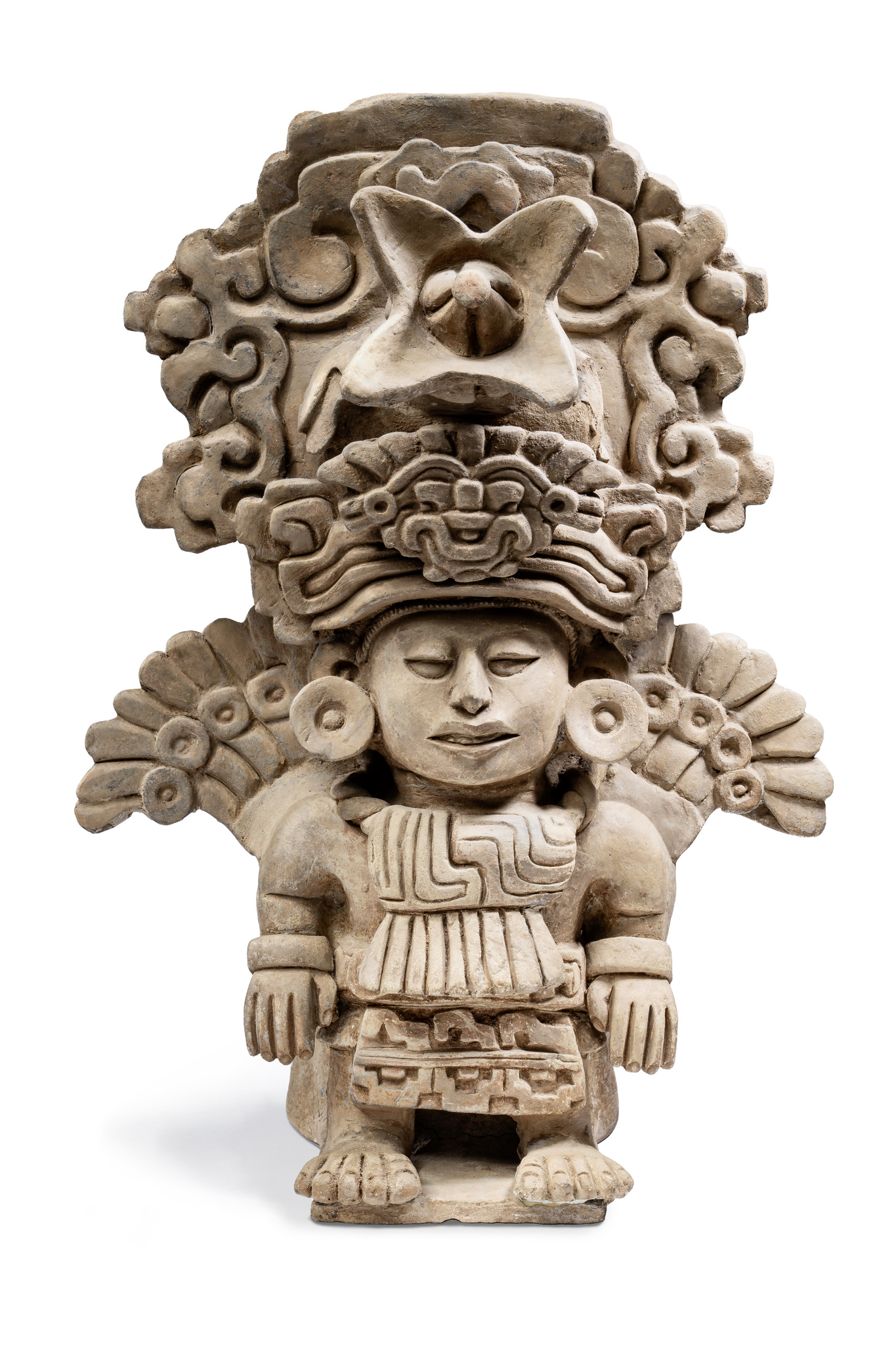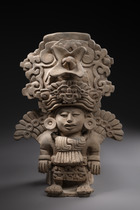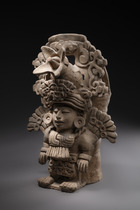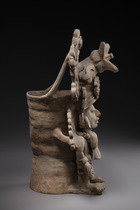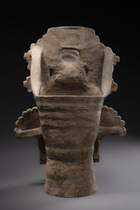Figurative Urn, ca. 300 - 800 AD · Mexico, Zapotecs, Oaxaca, Monte Albán III · ID: 3052463
A. & B. Schirmer, Berlin, Germany
Description
terracotta / ceramic, rest.
A cylindrical urn features a superimposed male figure dressed in exceptionally elaborate garments and adorned with magnificent feather ornaments and a headdress. In the frontal part of the headdress, there is a medallion shaped like the hieroglyph “C” (cf. Schuler-Schömig, 1970, fig. 11). This glyph appears in connection with deities associated with vegetal fertility. On figural vessels such as this one, the glyph often indicates a depiction of the rain god “Cocijo”, the most important deity in the Zapotec pantheon. He is responsible for fertility, rain, and maize cultivation and is also regarded as a manifestation of “Ometeotl”, the supreme deity of the Mesoamerican religion, embodying the duality of creation and destruction.
Monte Albán is a major archaeological site in Mexico, known as the former religious and political center of the Zapotec civilization. The ruined city sits atop an artificially leveled mountain ridge, about 10 kilometers from Oaxaca de Juárez, and is today part of the UNESCO World Heritage. Monte Albán was inhabited over a span of 1,500 years by various peoples, including the Olmecs, Zapotecs, and Mixtecs.
Monte Albán III refers to a specific period of settlement and cultural development at the site. This era falls within the Classic Period (circa 300 to 900 CE) and is often regarded as the heyday of Monte Albán.
The object Figurative Urn, ca. 300 - 800 AD with the object ID 3052463 was last part of the auction Auction 105 at November 15, 2025 on Zemanek-Münster Auction house. The object with the lot number 59 achieved a sales price of EUR 15,000.
Expertise
CIRAM, Thermoluminescence-Certificate 0411-OA-11M, New York, April 20, 2011
Comparing literature
von Schuler-Schömig, Immina, Figurengefässe aus Oaxaca, Mexico, Berlin 1970, p. 27
Publications
Royal-Athena Galleries, New York-Beverly Hills, Art of the Ancient World and other Selected Works of Fine Art, Vol. V, Part I - May 1988, No. 95
Notices
This object is subject to the UNESCO Cultural Heritage Protection Act. Export documents are required for export (subjected to a fee).

